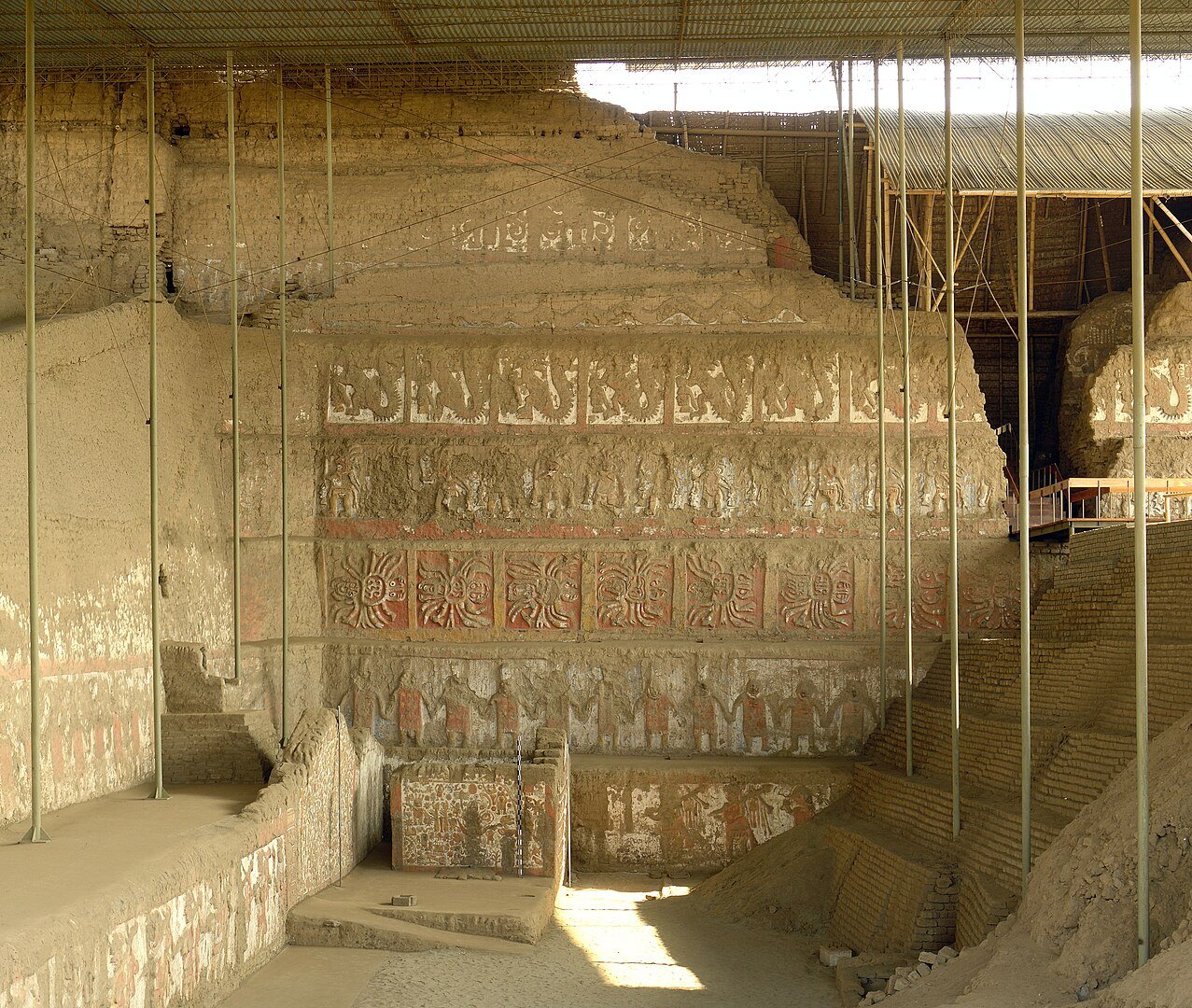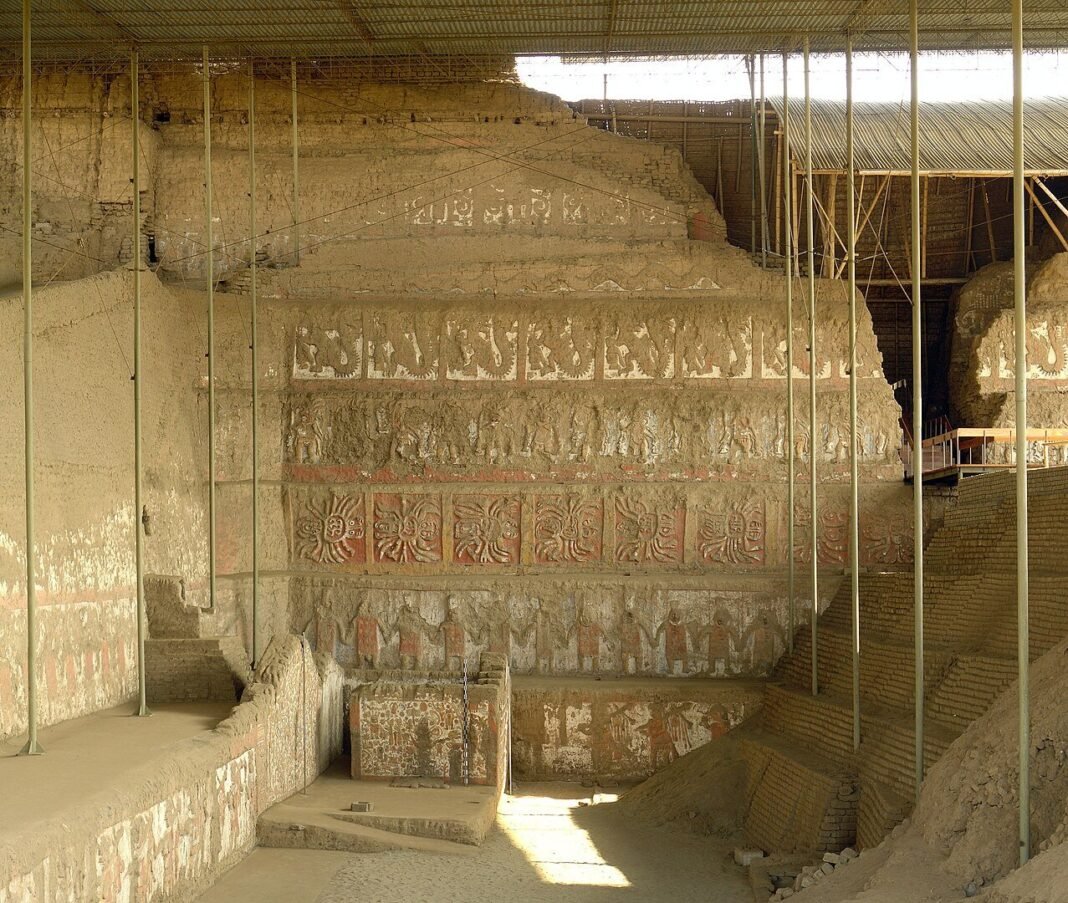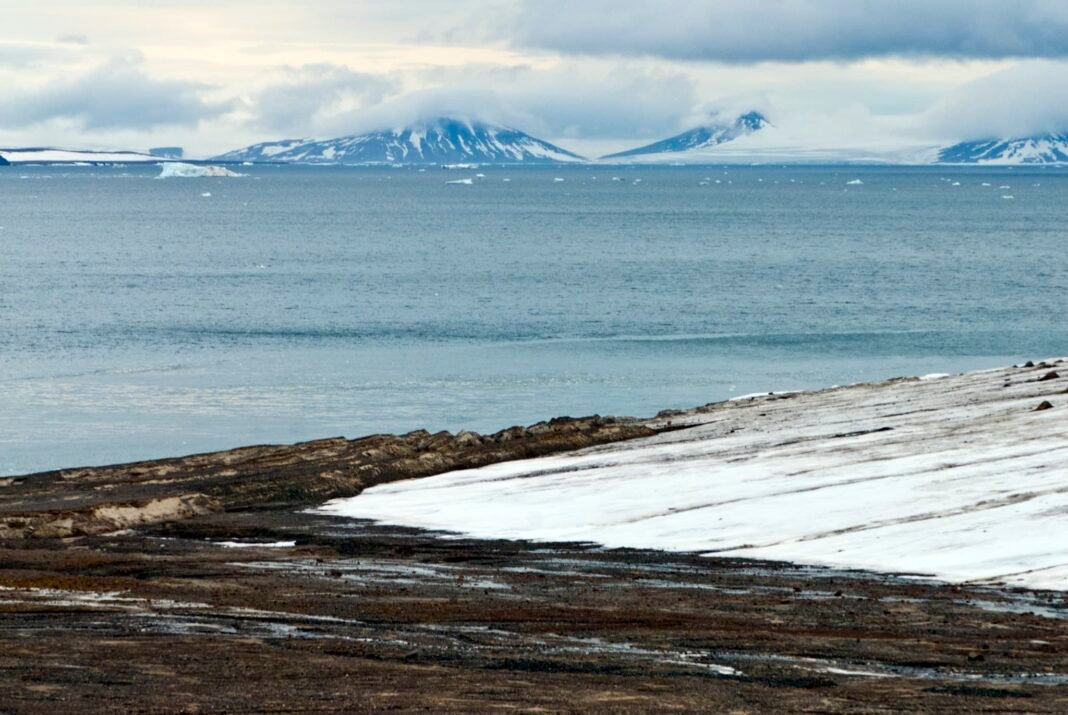
Archaeologists in northern Peru have uncovered ancient pre-Columbian mural reliefs at the Huaca Yolanda site in the La Libertad region.
The polychrome artwork, estimated to be 3,000 to 4,000 years old, was found in exceptional condition inside an adobe ceremonial temple. Specialists say the find is one of the most significant for understanding early coastal societies in South America.
The mural, more than five meters long and two meters high, was unearthed by a team led by Ana Cecilia Mauricio of the Pontifical Catholic University of Peru. Painted in vivid red, blue, yellow, and black pigments, it displays three-dimensional reliefs—a rare feature among murals of this period.
The work depicts symbolic marine scenes, including fish, nets, stars, and aquatic plants. Researchers believe the imagery reflects spiritual practices tied to fishing and agriculture among pre-Inca populations.
Rare find with unique artistic features
Mauricio described the mural as “an unexpected discovery” that stands apart from other archaeological finds in the region.
She said its design and preserved colors provide insight into the creative and technical abilities of ancient communities along Peru’s northern coast. Most murals from similar sites, she explained, appear flat or heavily deteriorated, making this example especially valuable for study.
Archaeologists in Peru have discovered a pre-Hispanic mural dating back more than 3,000 years at the Huaca Yolanda site, located 580 kilometres from the capital, Lima. The work found in an ancient temple is decorated with images of fish, stars, fishing nets and plants. pic.twitter.com/hpb4qO6ALy
— Kelvin (@Kelvin2052202) July 24, 2025
The artwork was discovered within a 40-hectare (99-acre) ceremonial complex in the Chao Valley, considered among the oldest on the continent due to its late pre-ceramic adobe structures.
Archaeologists believe the mural’s motifs, centered on marine life, differ from those seen in other pre-ceramic cultures and may have been linked to ritual practices aimed at ensuring prosperity in farming and fishing.
Preservation efforts amid threats
The discovery has raised concerns about the site’s future. Informal agricultural expansion in the surrounding valley poses a threat to the fragile remains. Mauricio emphasized the need for immediate protective measures, calling the mural “a living example of the cultural richness of ancient Peru, which we must preserve.”
In response, the Pontifical Catholic University of Peru team is coordinating protection efforts. Researchers are also conducting carbon-14 analyses to confirm the mural’s age and using digital documentation to preserve its details for future studies.
They say these steps will help maintain the find’s integrity and broaden understanding of the region’s historical and cultural context.
Experts warn that ongoing agribusiness activity could lead to the loss of similar archaeological treasures. They view the Huaca Yolanda mural as crucial for reconstructing the beliefs and practices of formative societies that lived along Peru’s northern coast thousands of years ago.


